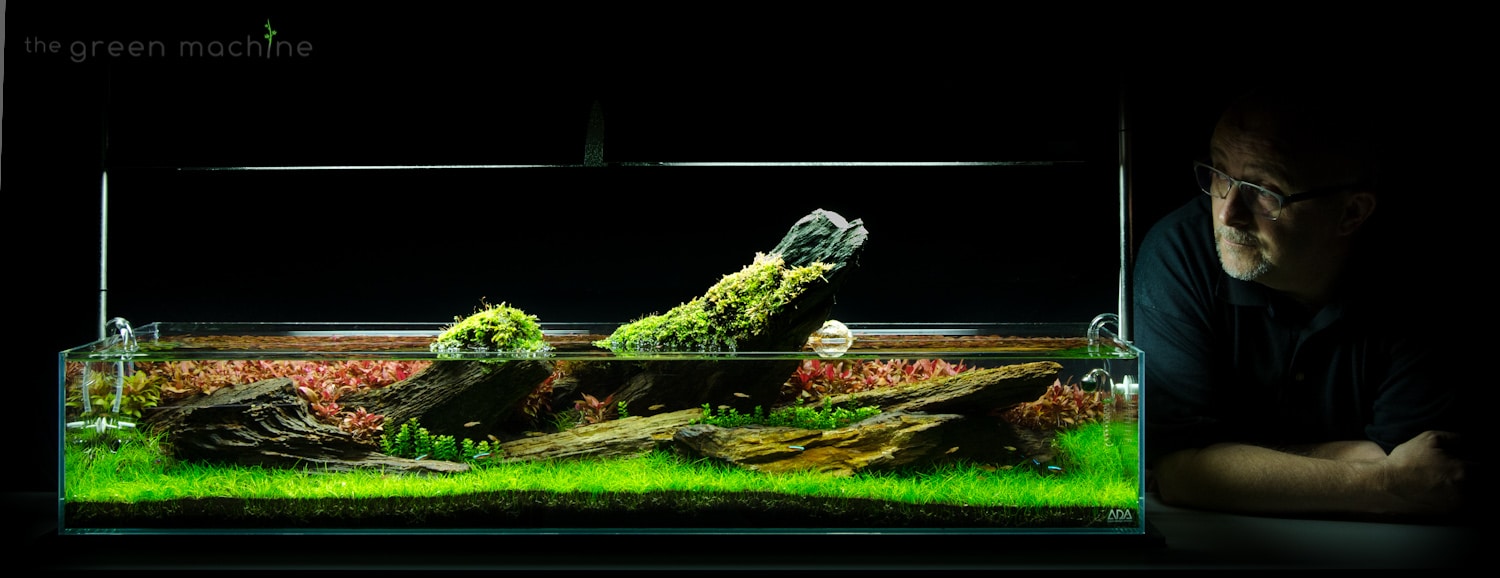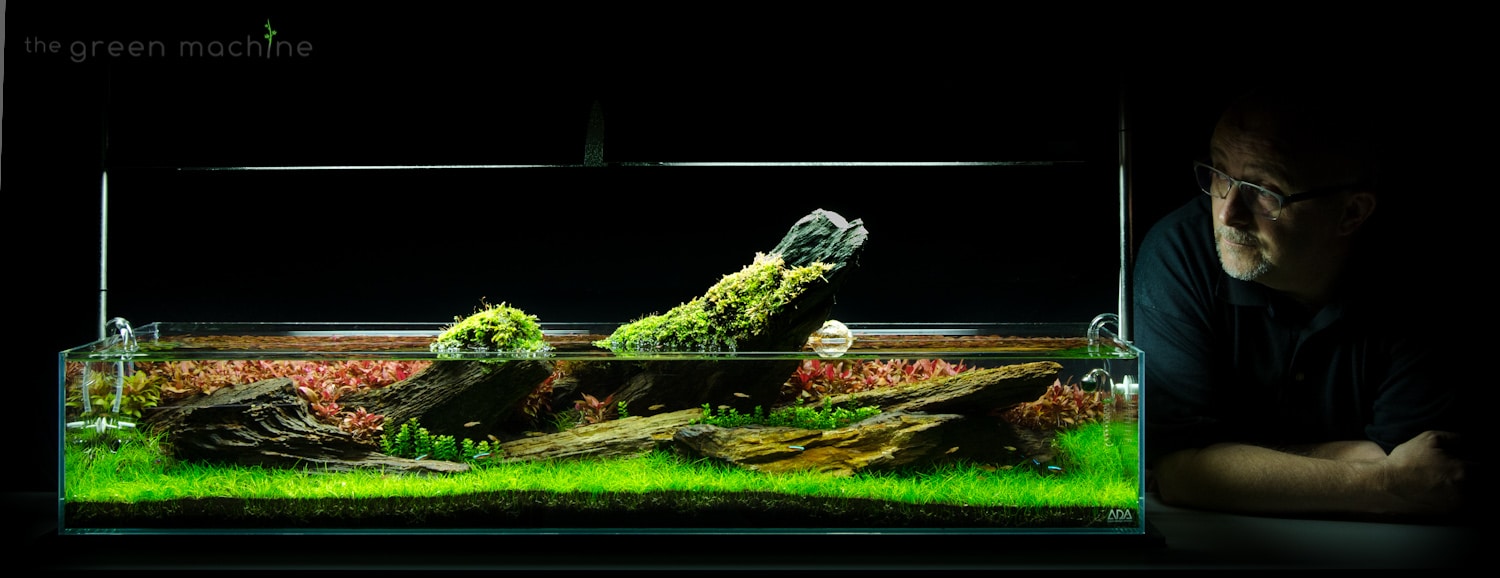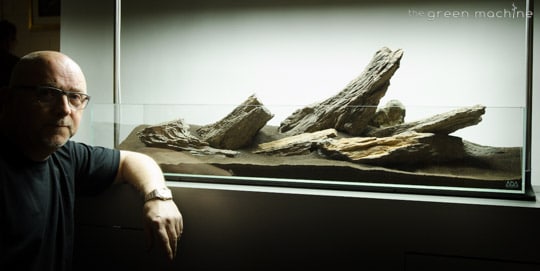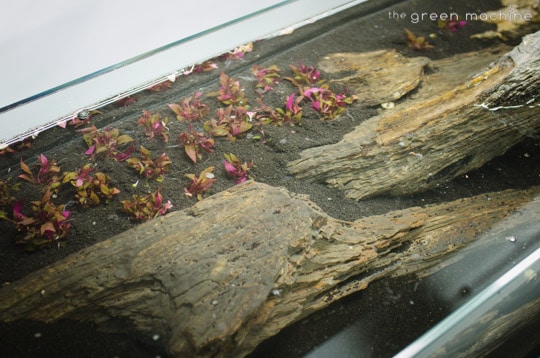
TGM Fossilised wood is a stunning form of stone that brings a unique sense of age and atmosphere to an aquarium.

It is sometimes called petrified wood, which comes from the Greek ‘petri’ meaning stone or rock and therefore literally means ‘stone turned into rock’. Fossilised wood is literally wood, or plant materials, from thousands of years ago that has been preserved by the process of permineralisation: the fossilising process in which all the organic materials are replaced with minerals, mostly silicates like quartz, whilst retaining the original structure of the plant material. Whilst other types of fossils are usually an impression of something in a piece of stone, fossilised wood is a three dimensional representation of the original material: the entire piece of plant material has been turned into a fossil. The process occurs underground when the plant material or wood is buried under sediment and is initially preserved because there is a lack of oxygen which inhibits aerobic decomposition. As mineral rich water flows through the plant material it deposits minerals in the plant’s cells and as the plant’s lignin and cellulose decay, they are replaced by mineral deposits and a stone mould takes their place. Therefore the material must become petrified or fossilised before it decomposes completely because the original structure of the plant material must be present in order for the process to occur.
As a result of its unique formation process, fossilised wood has all the characteristics of stone whilst retaining the grain, texture and shape of the wood it once was. It is therefore a truly striking material that can be used to great effect in your aquarium: it adds a sense of pre-historic age…an almost ethereal but solid quality that other layout materials simply cannot provide.
It can therefore be used to create very striking and impressive Nature Aquarium layouts.
TGM Fossilised Wood was sourced by James Findley himself after a very long, hard search. It is currently one of his favourite aquascaping materials.
Form and The Linear Layout
Fossilised Wood can be used to create several very striking layouts: The Linear Layout was created by James in ‘Crimson Sky’ and consists of a placing the hardscape along a very graphic, linear line and works extremely well in shallow aquariums like the ADA Cube Garden 60-F.

Fossilised Wood is perfect for creating this layout…in fact, it is almost the only stone with which this sort of layout could be successfully created. That is because, since it is plant material that has become fossilised, it retains the shape of plant material, more specifically it retains the shape of trees and branches which is a longer, more slender shape than most stones have. This shape makes it much easier to achieve a successful Linear Layout.
Vibrant Colour
 The colour of fossilised wood is also very unique and beautiful and compliments the use of red plants. In Arizona (video coming March 2014!), James wanted to create an aquascape that was inspired by the American landscapes of the region. This meant that it had to be composed primarily, in fact, almost entirely, of red hues. Fossilised wood allowed this to be achieved. The unique shape of the wood also allowed the stone formations of that region to be mirrored by the layout: the great height and unusual proportions of Fossilised Wood were perfect.
The colour of fossilised wood is also very unique and beautiful and compliments the use of red plants. In Arizona (video coming March 2014!), James wanted to create an aquascape that was inspired by the American landscapes of the region. This meant that it had to be composed primarily, in fact, almost entirely, of red hues. Fossilised wood allowed this to be achieved. The unique shape of the wood also allowed the stone formations of that region to be mirrored by the layout: the great height and unusual proportions of Fossilised Wood were perfect.
Versatility
Whilst all hardscape materials can be used in different ways and placed on different angles, none quite allow for the same dramatic difference as Fossilised Wood does. Fossilised wood placed on its side creates the impression of a fallen tree, or a riverbank, with a very linear outline, whereas Fossilised Wood used the other way up creates a dramatic, sky-craping and bold impression that feels entirely different from its alternative. It is this diversity that adds to the desirability of this stone since you can create dramatically different aquascapes with the same stones.
Read the Aquascape Journal of Crimson Sky and watch the documentary aqauscaping video here
Read about the Linear Layout Style here.
See James using Fossilised Wood in the Supertank ‘Arizona’ »
